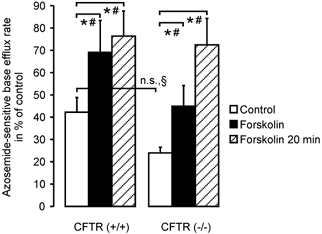Figure 6. NKCC activity in colonic crypts from CFTR (+/+) and (−/−) mice, in the presence and absence of forskolin stimulation.

cAMP-dependent stimulation with forskolin markedly enhanced the relative azosemide-sensitive flux rate in CFTR (+/+) crypts (42 ± 4 % to 69 ± 14 %, P < 0.05: Student's paired t test; n = 8 crypts from 5 mice) as well as in CFTR (−/−) crypts (24 ± 2 % to 45 ± 9 %, P < 0.05: Student's paired t test, n = 8 crypts from 6 mice). Interestingly, a longer duration of stimulation with forskolin yielded a much more pronounced stimulation on top of the brief forskolin stimulation in CF mice (72 ± 12 %, n = 10 crypts from 8 mice) than in normal mice (76 ± 11 %, n = 9 crypts from 6 mice; *P < 0.05: § Student's unpaired t test, # Student's paired t test).
